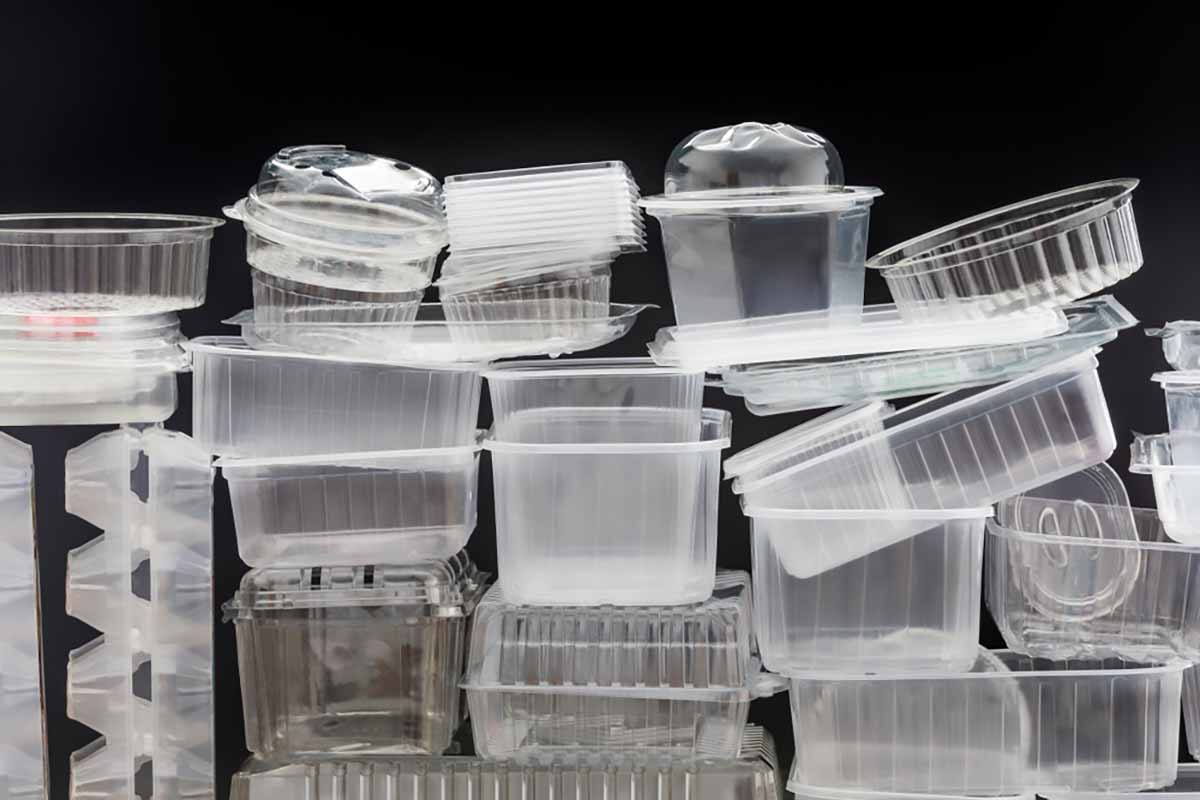
Despite making gains in PET recycling, the Coalition acknowledges that its goals require more industry support. | Konektus Photo/Shutterstock
Since forming in 2022, the PET Recycling Coalition has worked to increase PET bottle recycling rates and access to curbside recycling for non-bottle materials, including thermoforms.
Although during that time 23 entities have received $5.12 million in grants, “there is also the stark realization that achieving our goals will require more members, more ingenuity, and more funding,” the group said in its 2024 annual report, adding that nearly $15 million in additional funding requests were unmet. The Coalition, which is a project of The Recycling Partnership (TRP), expects to reach 60% acceptance for PET cups nationwide by the end of 2025, and aims to achieve at least 60% acceptance for all PET thermoforms by 2027.
As of September 2024, the acceptance rate for PET thermoforms was only 54%, compared to 89% for PET bottles, jugs and jars, according to data published by TRP and GreenBlue.
However, recent months have shown a growing industry emphasis on PET thermoform recycling, including a white paper from the National Association for PET Container Resources (NAPCOR), a report from thermoformer Plastic Ingenuity, and the start of curbside acceptance from Rumpke Waste & Recycling, in part to feed Eastman’s chemical recycling plant.
The Coalition is calling on PET stakeholders — brands, retailers and converters — to join the 14-member roster, to help increase PET recycling especially as state-level extended producer responsibility laws for packaging are taking shape.
“This will take significant collaboration with and beyond our current Coalition members,” the group said in the report. Member companies include the American Beverage Association, Association of Plastic Recyclers (which owns Resource Recycling, Inc., publisher of Plastics Recycling Update), Closed Loop Partners, Coca-Cola, Danone North America, Eastman, Foodservice Packaging Institute, Indorama Ventures, Kroger, NAPCOR, Niagara, Plastic Ingenuity, Procter & Gamble and consultancy Resource Recycling Systems.
“We’re in an interesting moment right now with PET thermoforms, especially as we’re looking at the seven states that have now passed EPR, and looking at Oregon that’s already implementing,” Katherine Huded, executive director of material systems for TRP, told Plastics Recycling Update.
End market growth is crucial ahead of EPR implementation
The Coalition has three focus areas for its thermoform work: end markets, design improvements and consumer education.
EPR laws will “start to set the recyclability standard for PET thermoforms, and so it is a critical moment in time for the industry to really step up and make these changes,” Huded said. “The reality is, there are solutions, and we just need to move quickly to put them in place so that PET thermoforms can be successful in these seven states, and then, of course, in the other 43.”
Last December, producer responsibility organization Circular Action Alliance submitted a draft plan for Oregon’s packaging EPR program, which launched July 1, in which CAA suggested PET thermoforms be added to the universal collection list. Regulators at Oregon’s Department of Environmental Quality later said they want to see more investment in end markets for thermoforms before adding them to the list, but that it could be done through a future plan amendment.
In Maine, as stakeholders debated the state’s recyclability list last spring, they found PET thermoforms had sufficient markets, but that they are not yet common enough in MRFs to warrant sortation. And California’s SB 54 mandates a 30% recycling rate for single-use packaging by 2028 — a level that would prove very challenging if thermoform acceptance and education weren’t to improve.
“Proactive work on thermoform circularity can ensure thermoforms are included on statewide collection lists,” Huded added. “Many of those lists will be in effect by the end of 2027 and will fundamentally change acceptance rates for many categories.”
While EPR rollouts will result in “significantly more supply coming out of these policy states,” only about 30% of North American reclaiming facilities can process thermoforms contained in commingled bottle bales, Huded said. At the same time, TRP research found that the percentage of non-bottle PET in commingled bales has increased to at least 15% and that most PET recycling efforts focus on bottles.
The Coalition provides a case study of California-based Valemi’s Pico Rivera MRF, which is increasing its sorting capacity by 70%, specifically for thermoforms.
WM, the nation’s largest hauler, is looking at how to incorporate more granular sorting, said Ganesh Nagarajan, senior director of plastics at WM, last month.“Separating clamshells from bottles adds costs, and puts the cost of additional recovery onto the clear bottles, which sell at a premium.”
“That’s really where the focus needs to go first, to make sure that we’re sort of plugging the holes in the bucket before we turn on the faucet,” she said.
Design improvements and consumer education
Several stakeholders are already taking “best-practice steps in terms of improved design and really pulling through that thermoform-to-thermoform material, which we know is really needed,” Huded said, adding that labels and adhesives present particular problems. “We just need more adoption of those best practices to improve those greater volumes within the stream to make it successful.”
The Association of Plastic Recyclers published a PET thermoform packaging design resource guide in November 2024, which also includes a market analysis.
In designing for recyclability, “end-to-end connection is critical for the end markets to be successful and to be able to take the material and turn it into new products,” Huded said. She added that the Coalition is helping to clarify where next steps are needed, as recycling stakeholders may struggle to understand the complexities involved with PET.
For example, consumers typically recognize that PET bottles are recyclable, but they may not be familiar with other forms of PET, such as beverage cups and clamshell takeout containers, Huded said.

